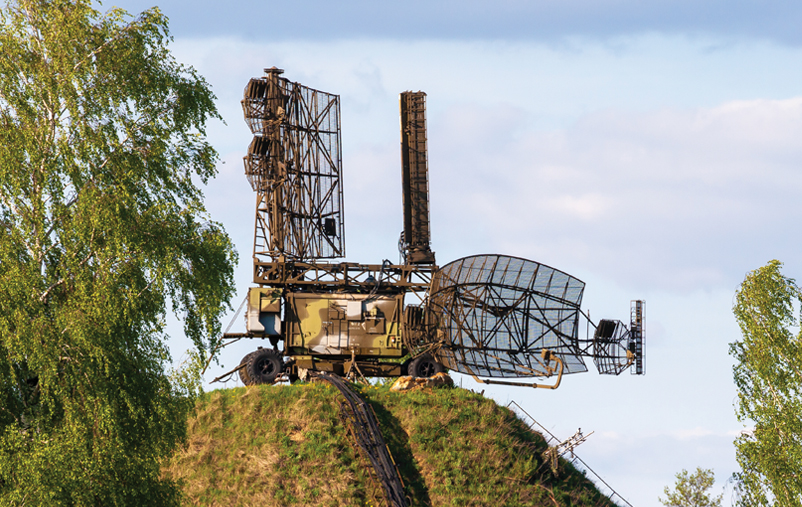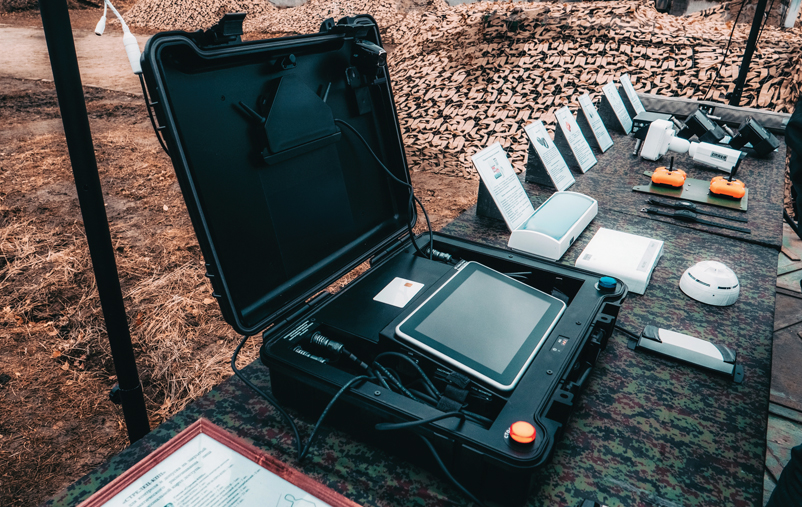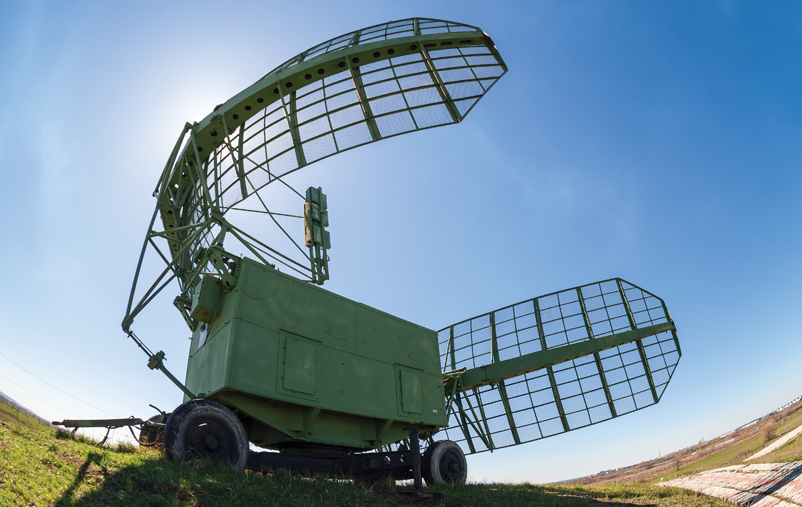On the modern battlefield, a lot unfolds beyond the observable eye—hidden wars pulsating and escalating on land, sea, and air, carrying the possibilities of victory or defeat. This battlefield involves the struggle for control over the electromagnetic spectrum, waged under the banner of electronic warfare. Without it, mission success is inconceivable. Though it may not always grab headlines, electronic warfare plays a decisive role in modern warfare. Most modern combat systems utilize the electromagnetic spectrum to control and disrupt invisible waves in this domain, be they radar signals, communications, navigation, or weapon guidance systems, enabling the forces possessing these capabilities to gain the upper hand in operations.
Electronic warfare encompasses any military activity or war involving the use of the electromagnetic spectrum or directed energy to control the spectrum, attack the enemy or hinder their operations. Its purpose is to deprive the enemy from using the electromagnetic wave spectrum while protecting the ability of friendly forces to do so freely without interference, gaining a decisive advantage on the battlefield.
The electromagnetic spectrum contains both seen and unseen ranges, measured in megahertz. Electronic warfare also involves signal interception, location identification, tracking, detection, blocking, disruption, deception, protection, and analysis. Electronic warfare is used to provide intelligence or conduct combat operations, such as jamming, disruption, or deception. Moreover, it can be conducted from the air, sea, land, or space by human-controlled or autonomous systems, targeting communications, radar, and other military and civilian assets.

Modern military capabilities increasingly depend on the electromagnetic spectrum, as fighters use it to communicate with each other and their leaders, understand the battlefield, make decisions, accurately identify targets, and engage them, all while protecting friendly forces from harm. Electronic warfare serves a critical function, safeguarding both access and use of the spectrum by friendly forces while averting and hindering the enemy’s ability to do the same.
Airborne electronic warfare became a significant part of operations when the use of radars began, and over time, radars, electronic warfare and infiltration techniques evolved, with engineers, scientists, and military leaders striving to create an air force characterized by efficiency and survivability. Recent events indicate a growing interest in airborne electronic warfare, with the NATO operation in Yugoslavia in 1999 serving as a vital moment in the ongoing discourse about current and future airborne electronic warfare for the United States.
Each airstrike on Serbian targets appears to have been shielded by radar jamming and/or the destruction of the enemy’s air defence system.
The Game of Cat and Mouse:
Electronic warfare is the capability to utilize the electromagnetic spectrum, signals such as radio, infrared, or radar, for detection, protection, and communication. Simultaneously, it can interrupt, avert, and weaken the enemy’s ability to use these signals.
Throughout history, electronic warfare has played a crucial role in assisting military leaders in maintaining strategic superiority in a rapidly advancing technological battlefield.
Electronic warfare involves conspiracies, secrecy, and technical innovation. While nations learned to exploit the electromagnetic spectrum for military gains in communication, navigation, and radar, military strategists and scientists simultaneously designed methods to deprive their adversaries of similar advantages.
The dynamic of the cat-and-mouse game emerged in the competition for spectrum dominance, a dynamic that continues to define progress in this field until today.
Global technological advancements in electronic warfare work towards equalizing opportunities, as the proliferation of commercial electronics and computing power, coupled with affordability, means that electronic warfare is no longer exclusive to wealthy nations. It has become a battleground for smaller states and even non-state actors.
Electronic warfare aids in resolving this complexity, ensuring that friendly force systems can communicate, identify enemy radar, and disable it.
The future of national spectrum dominance will require increasingly innovative strategies to keep their forces ahead of current and emerging threats.
Concepts and Key Capabilities of Airborne Electronic Warfare:
1- Compact and Powerful: Smaller, lighter, and more energy-efficient systems with increased capabilities will drive the evolution of close-range electronic warfare. Powerful digital capabilities in compact and lightweight setups are crucial to expanding spectrum dominance, including small unmanned and rotating platforms, where each element holds significance.
Affordable small and lightweight systems will provide a range of new solutions for electronic warfare capabilities in single-use or consumable platforms like decoy missiles.
2- Multifunctional and Reprogrammable: Granting systems the ability to switch in real-time between functions is a cornerstone of flexible and adaptive electronic warfare. Whether through manual reprogramming on the go or intelligent and autonomous reconfiguration, the system’s capacity to perform multiple functions, such as electronic attack, electronic protection, or electronic support, is expected with evolving needs.
With more innovation, systems will be able to transmit and receive simultaneously without unwanted interference.
Moreover, Machine learning heralds a new generation of cognitive electronic warfare systems that learn how to classify new threats, respond to them, and relieve the burden on fighters.
3- Modular, Open, and Upgradeable Units: Independently operating systems or those linkable to handle a larger set of threats simultaneously will empower future forces to control the electromagnetic spectrum.
Furthermore, the ability to add new functions to the system or create a group of connected systems will make electronic warfare operations more flexible and easier to maintain. Standardized, programmable, and upgradeable systems will provide powerful capabilities like distributed jamming against multiple threats and facilitate collaboration between human and non-human systems on the battlefield.

Sensing and Understanding the Battlefield
Electronic warfare is a vital component of modern warfare, especially for the United States in response to potential adversaries like Russia or China.
Electronic warfare encompasses operations using the electromagnetic spectrum for detection, reconnaissance, jamming, and deception against enemy radars, wireless communication systems, data links, and other electronic systems. The emphasis on electronic warfare in U.S. defence planning has increased due to the evolving international security landscape from the post-Cold War era to the era of renewed great power competition.
The capabilities of airborne electronic warfare form a part of the U.S. military’s airpower. While the number of U.S. electronic warfare aircraft is relatively small compared to attack and defence fighters, they play a role in ensuring air superiority and supporting ground forces.
How Does Spectrum Dominance Work?
The answer depends on the mission at hand and the specific conditions the fighters face. However, there are 3 ways to use electronic warfare: offensive measures, defensive measures, and supportive measures.
In other words, the spectrum is used to attack the enemy, protect friendly forces, and provide critical situational awareness that aids fighters in decision-making and increases the likelihood of mission success.
Whether configured for attack, defence, or support, the electronic warfare system must have a way to collect and understand signals on the battlefield. It needs to identify what is present, understand how it uses the spectrum, and determine whether it poses a threat. This is the system’s “reception” capability, typically executed by a subsystem called the radar warning receiver (RWR).
Configurations of electronic warfare systems involve a variety of different tasks and the use of a range of subsystems. However, despite this incredible diversity, there are three common key capabilities among most electronic warfare systems: environmental sensing (reception), environmental analysis (signal analysis), and environmental response (high-energy generation and transmission).
If the warning radar detects a signal and the analysis determines it represents an unavoidable threat, the electronic warfare system must then neutralize it and pass threat data to the technology generator, which decides how the system responds to address the threat.
The technology generator will choose the jamming method with the highest probability of success, based on various factors, including the specific threat characteristics, the hosting platform for the electronic warfare system, and the battleground – whether on land, at sea, or in the air.
The Scope of Airborne Electronic Warfare:
The general scope of airborne electronic warfare encompasses three main areas:
1- Electronic Attacks: Electronic attacks are utilized to reduce, disable, or destroy the enemy’s ability to use the spectrum to communicate, navigate, gather intelligence, or identify targets on the battlefield. These attacks are an integral part of military operations, enabling ground, naval, and air forces to accomplish their missions.
Moreover, electronic attacks are often used by friendly forces to achieve air superiority by destroying enemy air defences and disrupting communications.
Given that its purpose is to create chaos and confusion among enemy ranks, disabling their ability to communicate, monitor, and protect their airspace, electronic attacks are typically executed by specialised naval or aerial units whose primary goal is to achieve dominance over a broad spectrum.
2- Electronic Protection: Electronic protection aims to prevent hostile forces from using the electromagnetic spectrum, but its role is defensive.
Electronic protection systems work to shield individual aircraft, ships, ground vehicles, and personnel from electronic threats by providing a protective shield around platforms and crews in the immediate vicinity.
These systems offer warnings of threats and the means necessary to effectively protect themselves. By understanding the threat landscape, fighters can avoid detection, prevent enemy systems from locating or tracking them, and in combat situations, create electronic countermeasures to defeat the threat through various means, including radar jamming or deception, among other sophisticated techniques.
3- Electronic Support Measures (ESMs): Electronic support measures technologies enable fighters to monitor and understand how the spectrum is used by the enemy across the battlefield. ESMs aim to provide forces with situational awareness and understanding of the electromagnetic battlefield: What signals are present? What type of system is transmitting them? What conclusions can we draw about their intentions? Are they friends or foes?
Electronic support technologies assist leaders in creating a comprehensive operational picture of the actions of both allies and adversaries, allowing for informed tactical decisions.
This technology is tactically important as it provides real-time prioritization and response to potential threats.
Moreover, these systems are often integrated with electronic attack and electronic protection systems to deploy real-time countermeasures against actively targeted electronic weapons such as anti-aircraft or anti-ship missiles independently, without human intervention.
Real-time responses are crucial for the crew and platform survival. Furthermore, electronic support provides electronic intelligence information in the conflict area, through continuous spectrum data collection.
4- Electronic Intelligence (ELINT): Strategic electronic intelligence involves a long-range set of spectrum data used to develop and maintain comprehensive threat databases.
These threat databases hold significant strategic value. When combined with communications intelligence, they form part of a larger signals intelligence mission.
Electronic intelligence aids military strategists in developing insights into how operations are managed in contested areas and other strategically important military locations.
It gives pilots, sailors, and ground forces an idea of the types of threats they may face and the reassurance that they have the right countermeasures in place to stay ahead.
Advanced signals intelligence systems in electronic support measures are using artificial intelligence to classify and rapidly respond to threats.
Strategic electronic intelligence is currently being developed to expand this intelligence to describe threats that have not been encountered before, as part of the growing field of adaptive and cognitive electronic warfare.
The European Airborne Electronic Warfare Project
This project enables European air forces and NATO forces to operate securely within the European Union territories and deploy forces in other potential operational areas. The project is characterized by its interoperability with EU member states and in joint operations. It covers the design, development, and testing of multi-spectral jamming capabilities, utilizing the latest technology available in European industries, particularly in electromagnetic cyber activities.
The project follows a standardized development approach, allowing integration into various manned and unmanned aircraft, relevant to EU member states.
The system’s objective is to provide a platform for airborne electronic attack missions that can adapt to the latest requirements of electronic warfare.
This includes soft disruption of enemy air defences, modified escort/escort roles, non-traditional patrols, electronic attack, and continuous support for self-protected strikes, along with ongoing enhancement of capabilities.

The Future of Airborne Electronic Warfare
The future of airborne electronic warfare revolves around ensuring dominance across a broad spectrum at all times and in all domains. History has shown us that the future of electronic warfare always arrives quickly. The ongoing cat-and-mouse game between adversaries means that any force seeking to maintain its superiority must constantly think several steps ahead. However, the pace and spread of technological advancement are accelerating, with computing power and advanced electronics becoming cheaper, more powerful, and easily accessible. Now more than ever, it is easier for adversaries to effectively compete in the electromagnetic spectrum and challenge old advantages.
The future entails ensuring dominance across a broad spectrum at all times and in all domains. As it is today, future capabilities will include the use of the spectrum for offensive and defensive purposes, as well as to reach a dynamic understanding of the battlefield.
However, all of this will happen faster, more covertly, and more independently than today. Electromagnetic spectrum manoeuvres will be more flexible, and forces will be better equipped to pivot in real-time with changes in the battlefield, even using the spectrum for new types of attacks on hostile infrastructure and networks.
Electronic warfare systems must be able to deploy overwhelming force with pinpoint accuracy, deploy countermeasures to face unprecedented threats, manage the smart spectrum, and engage with joint and allied forces.
Achieving this goal will require incremental improvements and ingenious innovations, as well as new ways to address old problems and find solutions to challenges that have not yet emerged.
» By: Retired Colonel Eng. Khaled Al-Ananzah
(Advisor and Trainer in Environmental and Occupational Safety)













